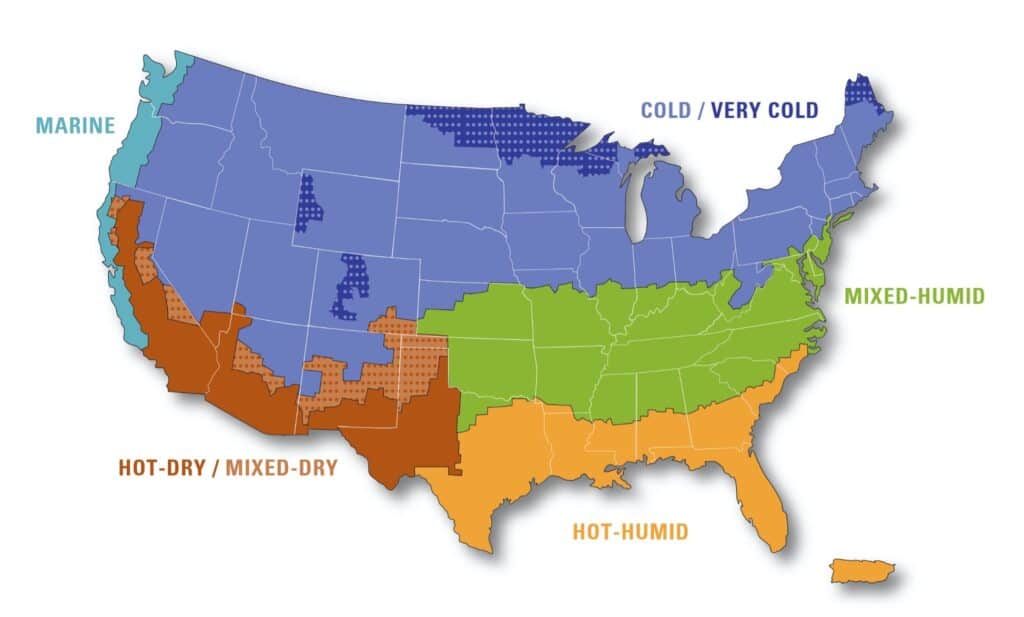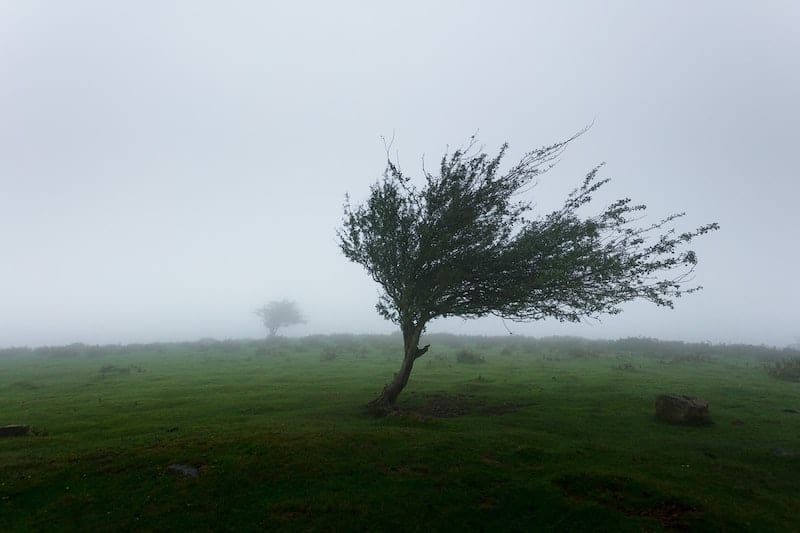The best time of the year to buy a modular home is a season that is free from extreme weather events that could challenge the building process. It might seem that the construction of a modular home is barely affected by the weather since most of it takes place off-site in a controlled environment. Yet the overall construction of a modular home can’t be completed without a series of on-site works which can certainly experience delays or complications due to certain weather events.
While some weather events are unpredictable, others follow a seasonal pattern and can often be avoided:
- Snow Storms and freezing temperatures
- Tropical storms and Hurricanes
- Extremely hot temperatures
Each one of these weather events occur seasonally in some areas of the U.S. and should be taken into consideration when choosing the best time of the year to buy a modular home. The areas affected by snow storms or freezing temperatures will rarely be affected by tropical storms or extremely hot temperatures. Therefore, the best time of the year to start building a modular home should be based on its location.
Understanding the modular home construction timeline
One of the greatest’s advantages of modular homes over traditional construction is that most of its construction takes place off-site in a controlled environment. This centralized construction process cuts down the off-site works enormously easing the delay and damage prevention due to extreme weather events.
In order to choose the best time of the year to build a modular home, we need to consider how long does it take to build a modular home and how important it is for every stage to happen in a season with no severe weather events.
- Design Phase: It usually takes 2 to 4 months [1]. No construction is being carried during this phase yet since this is the time to decide and define the structure and looks of the house.
- Building Permits: The time required to acquired clearance to build depends entirely on the planning and building departments of your jurisdiction. While some locations might offer the permits in just 3 months, other may take up to 12 months [3], so be sure to make room for this phase since it commonly takes longer than expected.
- Manufacturing Phase: The off-site construction of the modules conforming the house takes from 2 to 4 months [1] [2] [3] and it is fully carried in a factory-like environment. Generally, this phase moves smoothly regardless of the season since the controlled environment are isolated from any weather events. Moreover, this centralized construction site ensure that all the materials required are delivered in bulk to the factory [4], reducing any transportation delays due to the weather.
- Site Work and Foundations: Once the modules are built they are shipped to the building site where a number of on-site works have been taking place simultaneously to the manufacturing. This is the most important phase to consider when scheduling the modular home construction and it takes around 8 to 16 weeks to complete [1] [3].
The planning of the modular home building process should be scheduled to ensure that the site works phase is carried in a season free from extreme weather events. Keep in mind that on-site works are usually conducted simultaneously to the manufacturing phase. However, always verify the timings with your modular home manufacturer and contractor.
Weather events to take into consideration when choosing when to build a modular home
Snow Storms and freezing temperatures
Snow storms tend to affect the working routine and delay on-site construction works since the heavy accumulation of snow might hamper outdoor works. It is common for snow to block the access roads or even bring the power lines down.
However, dry extreme winters free from snow storms turn on-site works quite challenging as well. One of the most important elements build on-site are the permanent foundation which are commonly built of concrete and therefor require very specific environmental conditions to ensure its strength and avoid structural damaging.
Concrete is formed by a mix of cement and other aggregates to which water is added to create a chemical reaction that will form the strong material we know as concrete. It is important to keep the water from freezing since it will directly affect the strength of concrete [5].
Those areas known to experience snow storms or freezing temperatures on a regular basis, should avoid scheduling the modular home on-site construction works during the coldest weeks or months of their winter season.
Tropical Storms and Hurricanes
Hurricanes are damaging storms with winds over 74 mph [6] that often cause severe destruction. As much as possible we should avoid being hit by a hurricane while the construction works are in process. However, even if hurricanes are the strongest, any tropical storm despite its strength can become a hazard.
Tropical storms are specially damaging to construction sites, structures that are incomplete are more vulnerable since the envelope of the house is not completed and the wind pressure can easily build up and blow some parts of the building [7].
Moreover, building sites that are under construction tend to have loose materials or waste that can be easily flung by the strong winds and impact to other building causing damages outside the building site as well.
A modular home construction that is hit by a tropical storm will suffer severe damages, delays and increased costs. When building in a hurricane prone area it is best to avoid the Monsoon season when hurricanes as well as other storms such as tropical depressions or tropical storms are common.
Extremely hot temperatures
Some areas of the U.S. can easily reach a temperature of a 100º F and over, which represents a hazard on the construction site. The main danger related to extremely hot temperatures lays in the workers’ health, since the high temperatures can easily bring on heat illness.
Despite the importance of ensuring the workers well-being, very high temperatures affect some materials as well. Mortar and concrete can be affected by these temperatures damaging the quality of the foundations. Since these materials rely on water to build up their consistency, if water dries up too fast there won’t be enough moisture to create the right hold [8].
The construction of a modular home can be affected by extremely hot temperatures causing delays and structural damages that would suppose an increased cost. Those areas that experience extremely hot temperatures for a prolonged period of time should avoid scheduling the modular home construction during the summer months.
Best Time of year to build a modular home based on your location
The weather patterns in the United States vary from region to region. Observing every climate zone of the U.S. offers us the clues to consider when choosing the best time to build a modular home in that area.

Fig 1. Climate Zone map of the U.S.
- Blue zones, green zones and Alaska: These areas are prone to freezing temperatures in the winters as well as likely to experience common snow storms. We should avoid building a modular home during the winter and colder months therefore the best times of the year to build a modular home in these areas are late spring, summer and early fall.
- Yellow zone and Hawaii: These areas are hit by tropical storms every year seasonally. To avoid disasters, delays and extra cost, when building in this area the hurricane season which falls between the 1st of June to the 30th of November [9] should be avoided. Being as well an area where temperatures can be quite high, we will benefit from avoiding building during the hottest months of the year which fall around the hurricane season as well [10]. Therefore, the best time of the year to build a modular home in these areas is from the first of December till the 31st of May.
- Brown zones: These areas are prone to extremely hot temperatures. The best time of the year to build a modular home in these areas is anytime during fall, winter and spring.
- Light blue zones: In general, the weather is mild and there aren’t major disruptions that would affect the construction process. Any time of the year is good to start building a modular home in this areas.
This is a generalized guideline can be helpful to start getting an idea on when to start building the modular home according to where the building site is placed. However, given that the climate zones are quite extensive it is always recommended to dig dipper into the localized climate patterns affecting the building site. Scheduling the on-site works around any of the extreme weather events that being seasonal can be avoided, will ensure a smoother modular home construction process.
References
- Discover a better way to build your home. Plant Prefab https://www.plantprefab.com/homebuyers/#process
- Frequently Asked Questions – Process. Method Homes https://www.methodhomes.net/frequently-asked-questions
- You have questions, we have answers Blu Homes https://www.bluhomes.com/fact-sheet
- Blaney Flietner, M. Modular Homes go Greener Bob Vila https://www.bobvila.com/articles/454-modular-homes-go-greener/
- Cold Weather Concrete Guide. CEMEX https://www.cemex.co.uk/using-concrete-in-cold-weather.aspx
- (2020, May 1) Hurricanes. NOAA National Oceanic and Atmospheric Administration U.S. Department of Commerce https://www.noaa.gov/education/resource-collections/weather-atmosphere/hurricanes
- Agarwal, A. (2007, March) Cyclone Resistant Building Architecture GoI – UNDP, Disaster Risk management Programme https://nidm.gov.in/PDF/safety/flood/link2.pdf
- Why Are Weather Delays Such a Big Issue in the Construction Industry? Construction Marketing Associationhttps://blog.constructionmarketingassociation.org/weather-delays-big-issue-construction-industry/
- Tropical Cyclone Climatology NOAA National Oceanic and Atmospheric Administration U.S. Department of Commerce https://www.nhc.noaa.gov/climo/
- Florida Climate Information World Climate http://www.worldclimate.com/climate/us/florida
fig. 1: Building America climate zone map. Office of Energy & Renewable Energy, U.S. Department of Energy https://basc.pnnl.gov/images/building-america-climate-zone-map




